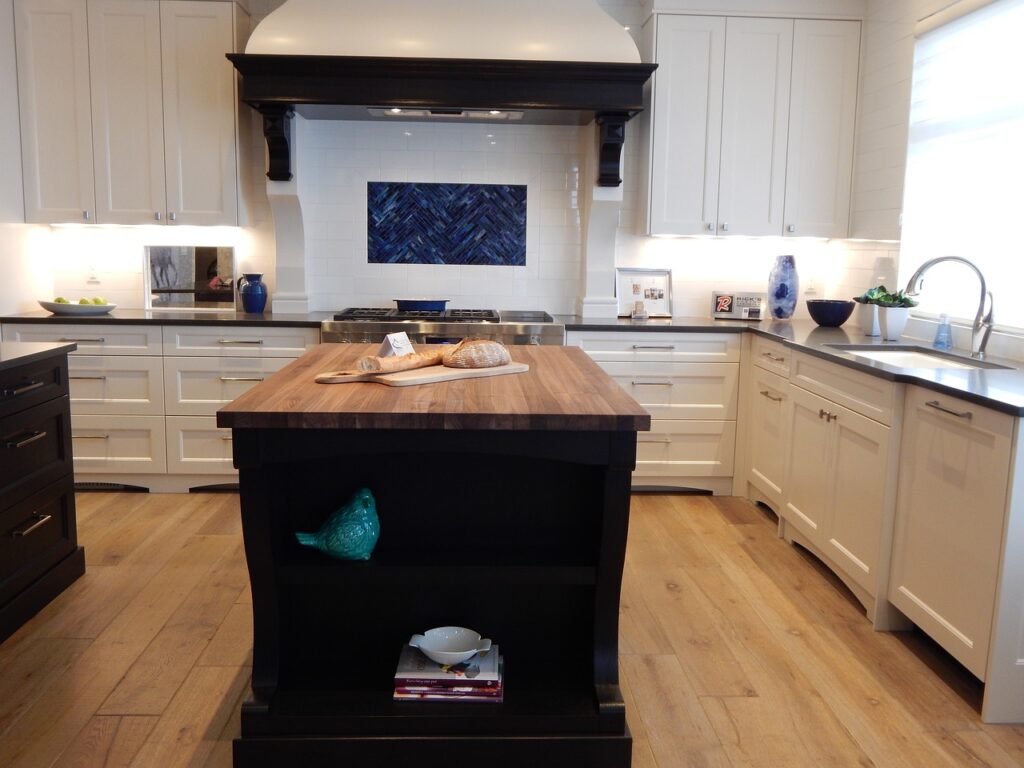The kitchen is often the heart of the home—a place where meals are made, family gathers, and memories are shared. But with so much activity, it’s easy for clutter to pile up, making it harder to keep things clean and organized. Whether it’s overflowing cabinets, crowded countertops, or drawers stuffed with gadgets, kitchen clutter can quickly become overwhelming.
Luckily, reducing clutter doesn’t have to be a daunting task. With a few smart strategies, you can transform your kitchen into a more organized, functional space. Here are some tips to help you declutter your kitchen and keep it that way.
- Purge Unused Items
One of the biggest contributors to kitchen clutter is holding on to items you rarely, if ever, use. That extra blender you haven’t touched in three years or the stack of mismatched Tupperware that never seems to fit? It’s time to let them go.
Tip: Start by taking everything out of your cabinets, drawers, and pantry. Sort items into three categories: keep, donate, and discard. Be honest with yourself about how often you use each item. If something hasn’t been used in the last year, it’s a good candidate for donation or tossing. This initial purge will free up valuable space and give you a clearer picture of what you truly need.
- Maximize Vertical Space
Many kitchens suffer from a lack of storage, but one way to combat this is by making better use of vertical space. Walls, the insides of cabinet doors, and even the backs of pantry shelves offer opportunities for storage.
Tip: Install hooks or magnetic strips on walls to hang frequently used tools like spatulas, tongs, and knives. Use cabinet door organizers for cutting boards, pot lids, or measuring spoons. If you have a small pantry, consider adding risers or stackable shelves to maximize space and make everything easier to access. These solutions can help you keep countertops clear while ensuring that commonly used items are within easy reach.
- Create Dedicated Zones
One of the secrets to an efficient, clutter-free kitchen is organizing it into zones based on how you use the space. This allows you to streamline your workflow and keep similar items together, reducing the temptation to let things pile up randomly.
Tip: Establish zones for different kitchen tasks. For example, create a prep zone near the cutting board with knives, mixing bowls, and measuring cups nearby. Designate a cooking zone by the stove where you keep pots, pans, and cooking utensils. Have a cleaning zone around the sink with sponges, dish soap, and towels, and a baking zone with flour, sugar, and mixing tools all in one area. This system helps prevent clutter from spreading and makes it easier to find what you need when you need it.
- Use Clear Containers and Labels
One common source of kitchen clutter is food packaging—boxes, bags, and containers of different shapes and sizes can make pantries and cabinets look chaotic. Switching to uniform, clear containers helps streamline the appearance of your kitchen and makes it easier to see what you have on hand.
Tip: Invest in clear, airtight containers for pantry staples like pasta, rice, flour, and snacks. This not only helps reduce clutter but also keeps food fresher for longer. Label each container with its contents and expiration date so you can stay organized and avoid food waste. For refrigerators, use clear bins to corral smaller items like condiments or snacks, making it easier to maintain order.
- Limit Countertop Items
Countertops are often the most clutter-prone areas in the kitchen because they’re used as drop zones for everything from mail to appliances. However, keeping countertops clear is key to a functional, stress-free kitchen.
Tip: Take stock of the items currently living on your countertops and ask yourself which ones you actually use daily. Keep only the essentials—like a coffee maker or toaster—and find storage space for the rest. Use baskets or trays to corral loose items like mail, keys, or recipes, and make it a habit to put things away after using them. The fewer items you have on your countertops, the more open and inviting your kitchen will feel.
- Embrace Multi-Function Tools
Another great way to reduce clutter is to minimize the number of single-use gadgets in your kitchen. Those avocado slicers, egg poachers, and garlic peelers might seem convenient, but they can quickly accumulate and take up valuable drawer or cabinet space.
Tip: Opt for multi-functional tools instead. A high-quality chef’s knife can replace several single-use tools, and a good food processor can handle everything from chopping to pureeing. When buying new kitchen gadgets, ask yourself if they can serve multiple purposes or if they will likely sit unused most of the time. By investing in versatile tools, you’ll save both space and money in the long run.
- Adopt the “One In, One Out” Rule
Once you’ve decluttered, it’s important to keep the clutter from creeping back. One of the easiest ways to do this is to follow the “one in, one out” rule.
Tip: For every new item you bring into the kitchen, get rid of an old one. If you buy a new set of dishes, donate or discard an older set. This rule helps maintain balance and prevents unnecessary items from piling up again. Encourage your family to follow this rule as well, so everyone contributes to keeping the kitchen organized.
Final Thoughts
A clutter-free kitchen doesn’t just look better—it functions better. By purging unused items, maximizing vertical space, creating dedicated zones, and limiting what lives on your countertops, you can create a space that feels more open, organized, and enjoyable to use.
Remember, kitchen organization is an ongoing process, so it’s important to regularly reassess what you have and how you use it. With these simple strategies, you can keep your kitchen clutter-free and make cooking and cleaning a breeze for the whole family.


